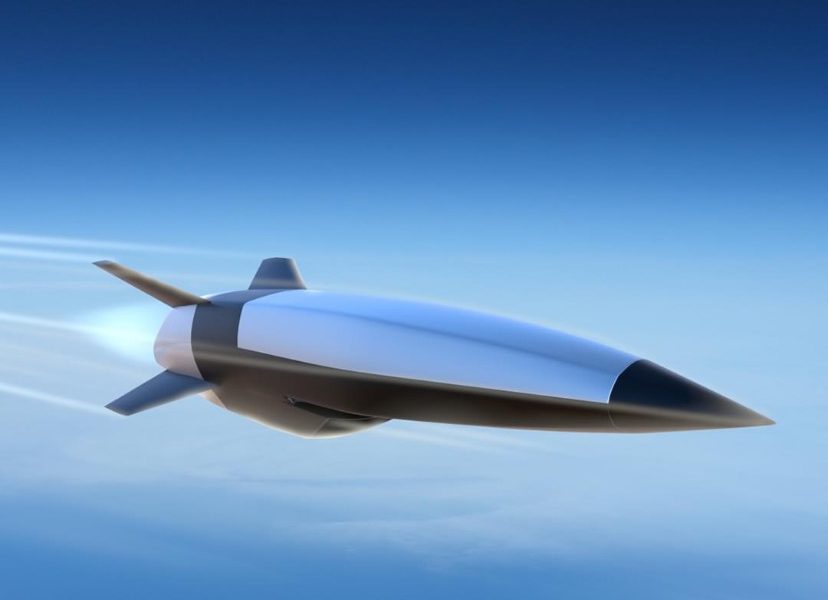Looking to keep pace in the fast-evolving field of hypersonics, lawmakers are directing the Pentagon to submit an overhauled strategy for the technology at least every two years as part of the 2024 National Defense Authorization Act, which is poised to pass both chambers of Congress this week.
As part of the compromise conference report on the NDAA issue last week, lawmakers said they also want the Secretary of Defense to identify, within a year, additional overland corridors in which hypersonic weapons and aircraft—which create large sonic booms—can be tested.
“Not less frequently than once every two years,” the Defense Secretary is to “revise and update” the department’s hypersonics strategy and submit it to the “appropriate congressional committees,” according the bill. The directive will sunset on December 31, 2030.
There are numerous hypersonics programs underway within DOD and the armed services—ranging from both air-breathing and boost-glide offensive hypersonic missiles to hypersonic interceptors—but only a few are closely coordinated. The study wants a detailed DOD plan for “funding and investments … related to the procurement, research, development, test, evaluation and operation and maintenance of offensive and defensive hypersonic weapons.” The new language sets the timing for these reports and specifies the cost breakouts for various aspects of such systems.
“Each report [shall] include cost data on the hypersonic capabilities of the Department of Defense, including vehicles, developmental and operational testing, hypersonic sensors, command and control architectures, infrastructure, testing infrastructure, software, workforce, training, ranges, integration costs, and such other items as the Secretary of Defense considers appropriate,” the bill states.
Each is to be ascribed to “an offensive or defensive mission,” down to the particular program element numbers covered and “the name of the entity that is carrying out the activity”—i.e., the Air Force, the Defense Advanced Research Projects Agency, the Rapid Capabilities Office, etc.
Each report is to be presented in an unclassified form, but may include a classified annex.
Some Hill staffers have complained privately that the Air Force has not been fully transparent about its plans and the estimated costs for programs such as the AGM-183 Air-launched Rapid Response Weapon (ARRW), Hypersonic Attack Cruise Missile (HACM), and MAYHEM, a planned reusable air-breathing hypersonic system expected to become available in the early 2030s.
The Air Force dropped out of the multiservice Hypersonic Conventional Strike Weapon in early 2020, saying at the time that it preferred the ARRW. But earlier this year, Air Force Secretary Frank Kendall said the Air Force wouldn’t pursue ARRW, either, and would focus its money and efforts on HACM, which is a smaller, longer-ranged, air-breathing weapon that can be carried by a fighter.
Kendall has also argued that it isn’t necessary for the U.S. to match China’s development and deployment of hypersonic systems, as the two countries have different operational concepts for warfare and the Air Force’s priorities put less priority on such systems. However, lawmakers have frequently expressed concern about China’s edge in developing hypersonic weapons.
The NDAA also directs the Pentagon to conduct a study of “at least two” corridors within the U.S. for “additional … long-distance hypersonic system testing,” after which officials are to launch the necessary environmental impact analyses for implementation. A report on the preferred corridors is due by the end of 2024.
The Pentagon now does most of its hypersonics testing on over-water ranges off the East and West coasts of the continental U.S., but hypersonic missile programs will soon move into a phase where their ability to navigate over varied terrain will have to be tested, as will their effectiveness against ground targets. The flight profile of hypersonic systems will require that they function over thousands of miles of land, or ocean as well as land.
Air Force officials have said they are looking at a number of potential hypersonic weapon ranges that may transit the Gulf of Mexico and the Southwest U.S. en route to impact points in Nevada or Utah. They have also said they are looking at ranges from the Pacific Ocean that would transit Alaska ranges.
However, the most likely initial overland test corridor is not in the U.S., but in Australia, at that country’s Woomera range. Australia and the U.S. are partnered on a number of hypersonics projects, including airborne testing, wind tunnel testing, and mutual development efforts.


